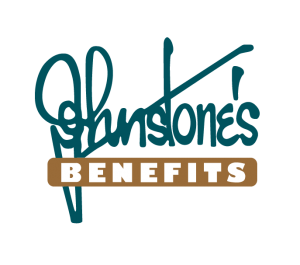The Journal
Solid Group Plans Made Simple
Dental Costs
Cost trends post-COVID
Group insurance companies review their health and dental benefit rates on an annual basis in anticipation of changes in the cost of services expected during the next year. Referred to as “trend,” this is the insurers’ way of trying to predict the cost of future claims. They use claims history, or utilization, of each group, and also consider other factors, such as inflation, changes in legislation and fee guide increases.
As a group insurance consultant and broker, Johnstone’s Benefits provides our clients our own thorough review of the insurer(s)’ proposed plan renewal rate adjustments, which includes validation of data and assumptions, market comparators and ultimately negotiation with the insurer(s) as required on our clients’ behalf.
Historically, dental plan increases reflected only those increases found in the annually published dental fee guides. However, in more recent years, an aging and better-informed population is now demanding a higher standard of dental treatment, they are using their dental plans more often, and they are seeking more specialized services. Additionally, dentists are far better at ensuring patients don’t miss their regular check-ups, and they offer services that may not have been offered or even available in the past.
In response, insurers are forced to apply a trend factor which factors in the increased cost of products and services, the increased number of services being claimed, in addition to the annual dental fee guide adjustments.
Dental Fee Guides
According to an article published in August 2023 in The Globe and Mail, many Canadians will pay much more at the dentist this year as provincial and territorial dental associations update their fee guides with significant (some record-high) average increases. Three provincial dental associations reached by The Globe and Mail indicated that decades high inflation, higher staffing costs and other rising dental practice expenses, such as rent, equipment, and infection control and prevention are some of the key cost drivers.
All provinces and two territories (excluding Nunavut) annually publish a fee guide for dental treatments, as do some insurers, such as Pacific Blue Cross (PBC). Dental fee guides are reference documents, and the fees are deemed ‘reasonable and customary’ for specific procedures within that province/territory.
As reported in The Globe and Mail, a spokesperson for the BC Dental Association quoted in an email that “it’s important to note that suggested increases are just that – suggestions. Dentists can decide whether to apply some or all of the increases based on the realities of their practices”, adding that “the majority of dentists do follow some or all sections of the suggested fee guide”.
Dentists have a legal and ethical obligation to obtain their patients’ informed consent prior to the start of any dental treatment plan, and must inform the patient if they intend to charge fees that are above the fees listed in the guide (as it is likely the group insurer will not cover these fees). This includes discussing the proposed treatment plan, associated risks, as well as what the treatment will cost, before the patient agrees to proceed. Cost estimates include the cost of materials and laboratory ‘at cost’ fees, and are typically offered to the patient within a range of lowest and highest costs.
The BC Dental Association also identified higher staffing costs, exacerbated by a general shortage of dental staff, as a cost driver this year. The Ontario Dental Association cited that costs related to infection prevention and control are now some of its members’ biggest expenses, driven by the stricter regulations introduced during the COVID-19 pandemic period.
To give context to The Globe and Mail article, and our own clients experiences, in 2019, the British Columbia Dental Association increased their fee guide on average 2.51%; the Ontario Dental Association increased fees by 4.19% (a noticeable change from 1.86% in 2018) and the Quebec Dental Association increased fees by 2.2%. Alberta introduced a dental fee guide in 2018, the first time in 20 years. Compare to average increases for the 2022 dental fee guides … British Columbia – 7.35%; Alberta – 3.9%; Ontario – 8.5%; Quebec – 9.8%; other provinces – between 5% and 6%.
Impact of COVID-19
Dentistry was immediately impacted by COVID-19 – new restrictions, public health issues, infection control, and patient anxiety. The impacts are still being felt in dental practices. In response to COVID-19, the Canadian Dental Association gave dental practitioners general guidance focused predominantly on the need to socially distance, therefore modifying how patients could visit the dental office. These modifications included, but were not limited to:
- Modified approaches to dental care, such as completing pre-visit health assessments and telephone or virtual follow-ups with patients and assessing patient concerns and initial treatment planning over the phone or virtually (part of ‘teledentistry’ which launched more dramatically during this period) ; and
- Maintaining appropriate social distancing among staff and patients by scheduling patient visits to reduce the number of individuals in the office at a given time.
In essence, of course, many plan members delayed their dental services because of personal concerns and public health restrictions. Undoubtedly, the re-surgency of regular dental services will have impacted dental plan costs in the last year.
